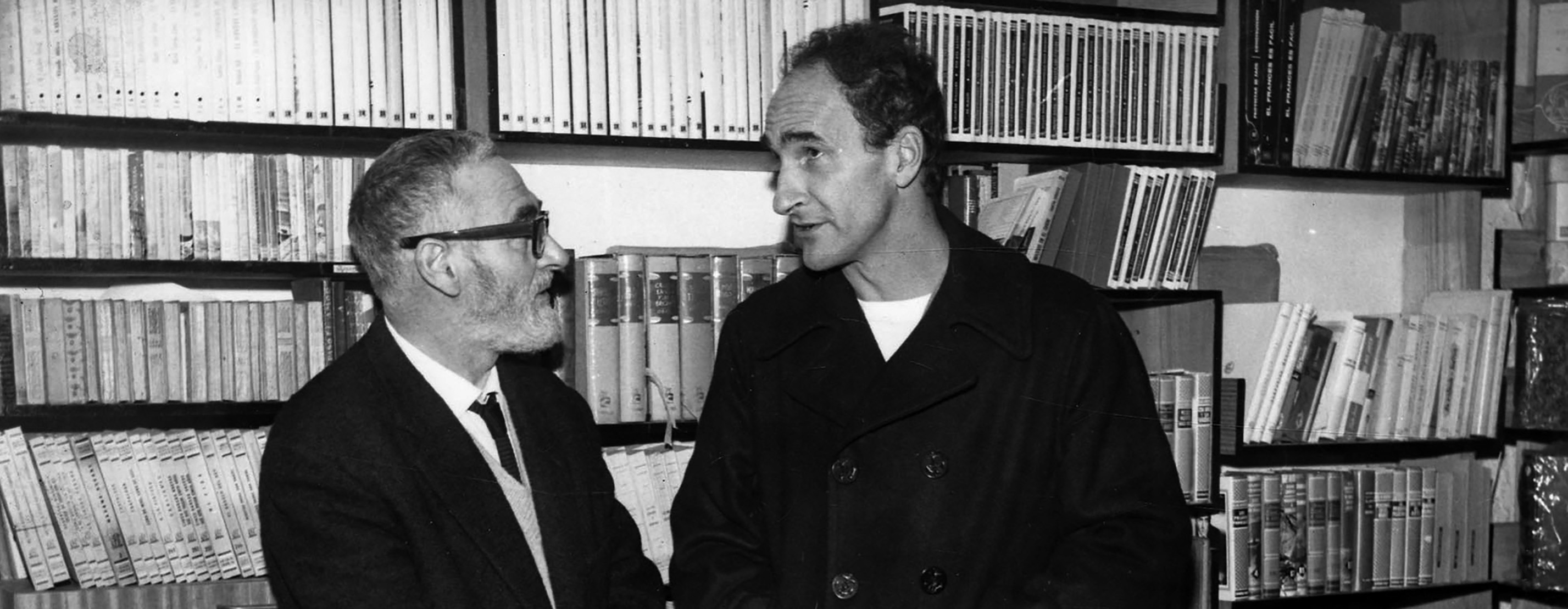Jorge Oteiza and Eduardo Chillida: Dialogue in the 1950s and 1960s
The exhibition Jorge Oteiza and Eduardo Chillida: Dialogue in the 50s and 60s is organized by the San Telmo Museum with the collaboration of the Bancaja Foundation, whose headquarters in Valencia were the first place where it could be visited. This exhibition presents the work of Oteiza and Chillida together for the first time.
- 2022 april 9th - october 2nd
- From Tuesday to Sunday, 10:00 a.m. - 20:00 p.m.
- Tickets: 6€ (special price: 3€)
- Tuesday: free entry
- Guided tours
- Audio guides: free on our APP SAN TELMO MUSEOA
(Available for Android + IOS)

This exhibition focuses on the work produced by the two artists over two decades, specifically on their careers between 1948 and 1969. These were decisive dates in their lives.
Jorge Oteiza (Orio, 1908–San Sebastián, 2003) and Eduardo Chillida (San Sebastián, 1924–2002) were both essential figures in international sculpture during the second half of the twentieth century. Their worldwide importance became clear in the 1950s, when they achieved outstanding successes in highly prestigious competitions in Europe and America.
In 1948, Oteiza returned to Spain after thirteen years living in Latin America, during which he devoted himself primarily to university teaching, while continuing his activity as a sculptor, which he had begun in the first half of the 1930s. That same year, Chillida left for Paris, having made the decision to become a sculptor after abandoning his architecture studies. In 1969, on the other hand, Oteiza completed his statuary for the Sanctuary of Arántzazu, which he had started in 1951 but had been suspended by order of the Vatican from 1955, and Chillida placed his first great public work in Europe on the outside of the UNESCO building in Paris.
Both of them worked on the Sanctuary of Arantzazu, where they left some of their best works of the first half of the 1950s -geometric abstraction in the doors and tragic existentialism in the statuary- but it was in 1955–56 that they reached the height of their creative powers, when Oteiza initiated and completed his spatial investigations, which he called an “experimental proposition”, and Chillida began to “cut iron” to create a distinctive and romantic idiom close to informalism.
Profoundly different in character, and therefore very different as artists, they nevertheless shared interests and creative concerns, participated in cultural projects, took political initiatives in support of other artists, and were immersed in the spirit of the period, which can be traced in their works with subtle interactions from one to the other. This exhibition invites you to discover them.
Profoundly different in character, and therefore very different as artists, they nevertheless shared interests and creative concerns (...)
Accessible texts
In order to make the exhibition accessible for people with visual disbility, it is possible to download its texts on mobile phones, thanks to the collaboration with Begiris association.
Guided tours
Every week there are guided tours to the exhibition.
- Tuesday: 10:30 (cas), 18:00 (eus)
- Saturday: 10:30 (eus), 18:00 (cas)
They are free with the ticket to the museum. Places can be reserved on the website (available from april 16th).
Booking and further information at 943 48 15 61, [email protected].
Activities
Until june 2022, the museum has programmed many activities around the exhibition: talks, trips, children's workshops... Consult the full agenda (in Spanish)